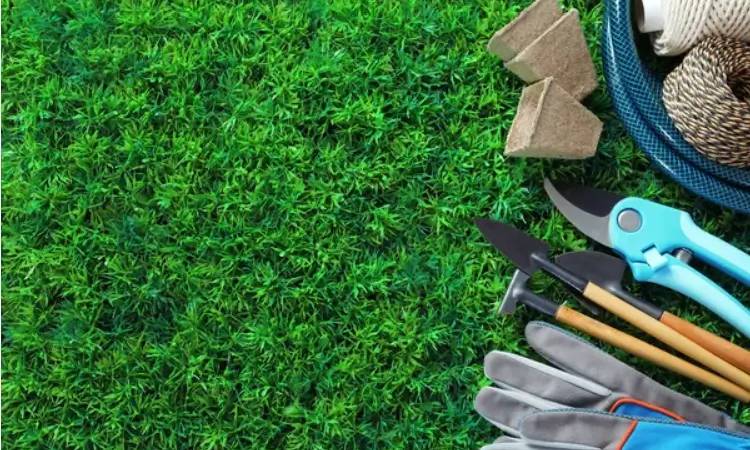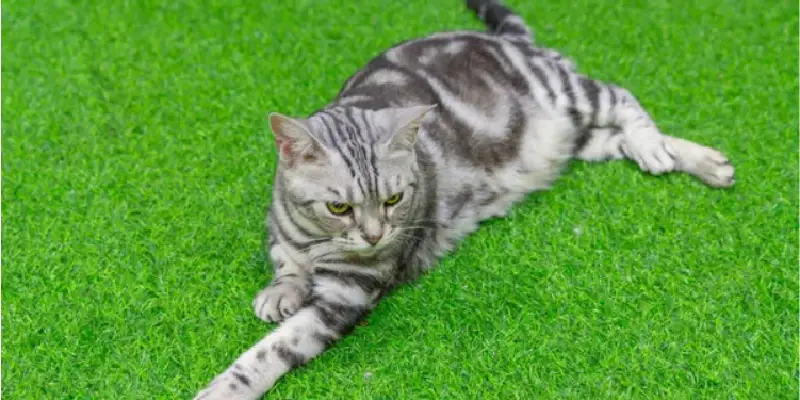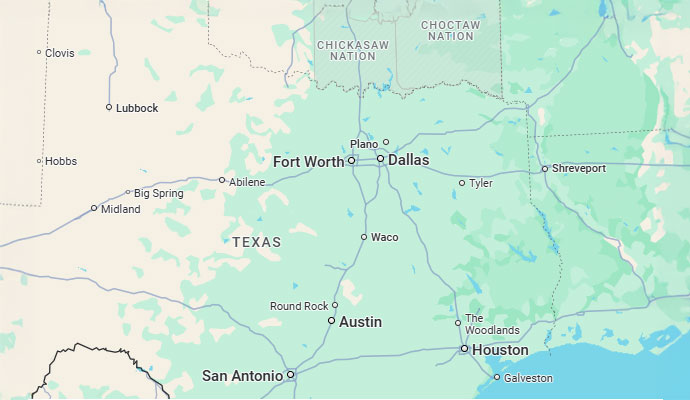
10 Tips to Keep Your Artificial Grass Lawn Pristine All Year Round
Artificial grass has become increasingly popular among homeowners looking for a low-maintenance, lush green lawn all year round. While artificial turf requires significantly less upkeep compared to natural grass, it still needs proper care to maintain its pristine appearance and extend its lifespan. Consulting with artificial grass experts can provide valuable insights and professional advice on maintaining your turf.
Let’s explore 10 essential tips for how to keep artificial grass clean and well-maintained, ensuring your lawn remains the envy of the neighborhood.
1. Regular Brushing and Raking
One of the most important aspects of artificial grass maintenance is regular brushing and raking. This helps maintain the grass blades’ upright position and prevents matting. Use a stiff-bristled brush or a power broom specifically designed for artificial grass to gently brush the fibers against the grain. This process also helps redistribute the infill material, which is essential for maintaining the turf’s structure and drainage.
- High-traffic areas: Weekly brushing
- Moderate-traffic areas: Bi-weekly brushing
- Low-traffic areas: Monthly brushing
Regular brushing not only keeps your artificial grass looking its best but also helps extend its lifespan. By maintaining the grass fibers’ upright position, you prevent matting and ensure proper drainage, which can help prevent issues like moss and algae growth. Additionally, brushing helps redistribute the infill material, preventing bare spots and maintaining a consistent, cushioned surface.
When brushing your artificial grass, it’s essential to use the correct technique to avoid damaging the fibers. Follow these steps for optimal results:
- 1. Choose a stiff-bristled brush or a power broom designed for use on artificial turf. This is the best tool for cleaning artificial grass.
- 2. Brush the grass fibers against the grain, starting from one end of the lawn and working your way to the other.
- 3. Use gentle, even strokes to avoid applying too much pressure on the fibers.
- 4. Brush in different directions to ensure all fibers are addressed and the infill material is evenly redistributed.
- 5. After brushing, use a rake or leaf blower to remove any loosened debris from the surface of the grass.
By following these brushing techniques consistently, you can maintain the beautiful appearance and longevity of your artificial grass lawn. Regular brushing is a crucial part of how to care for artificial grass.
2. Removing Debris
Leaves, twigs, and other organic debris can accumulate on your artificial lawn over time. Regularly remove this debris using a leaf blower, rake, or garden vacuum to prevent it from decomposing and causing damage to the turf fibers. This is particularly important during the fall season when leaves are more abundant. Removing debris is an essential aspect of artificial grass upkeep.
- Use a soft-bristled rake or a leaf blower on a low setting to avoid damaging the grass fibers.
- Remove debris at least once a week, or more frequently during periods of heavy leaf fall.
- Pay extra attention to areas around trees and shrubs, where debris can accumulate more quickly.
Allowing debris to accumulate on your artificial grass can lead to several issues:
- 1. Decomposing organic matter can trap moisture, creating an ideal environment for mold, mildew, and bacteria growth.
- 2. Debris can block drainage holes, leading to poor drainage and potential damage to the turf backing.
- 3. Accumulated debris can attract pests and create an unsightly appearance on your artificial lawn.
By promptly removing debris, you can prevent these issues and maintain a clean, healthy artificial grass surface. This is a crucial part of how do you maintain artificial grass.
3. Spot Cleaning Stains

Accidents happen, and stains are inevitable, even on artificial grass. The key to maintaining a pristine appearance is to address spills and stains promptly. Here’s how to clean synthetic grass when faced with common stains:
- Pet waste: Remove solid waste and rinse the area with a hose. For persistent odors, use a turf deodorizer.
- Food and drink spills: Blot up excess liquid with a cloth or paper towel, then rinse the area with water.
- Oil and grease: Apply a degreaser specifically designed for artificial turf and rinse thoroughly.
- Chewing gum: Apply ice to harden the gum, then carefully remove it using a plastic knife or spatula.
For a gentle, all-purpose spot cleaning solution, mix equal parts water and white vinegar in a spray bottle. Apply the solution to the stained area, let it sit for a few minutes, then blot with a clean cloth or rinse with water. This solution is effective for most common stains and is safe for use on artificial grass.
Preventing Stains on Artificial Grass
While it’s impossible to completely prevent stains on your artificial lawn, there are steps you can take to minimize their occurrence:
- 1. Encourage family members and guests to clean up spills and messes promptly.
- 2. Place doormats at entrances to your home to reduce the transfer of dirt and debris onto the artificial grass.
- 3. Consider designating a specific area for pet relief to concentrate potential stains in one location.
- 4. Use caution when grilling or engaging in activities that may lead to spills or stains near your artificial lawn.
By being proactive and addressing stains quickly, you can maintain the pristine appearance of your artificial grass lawn. Spot cleaning is an important part of the maintenance of artificial grass.
4. Weed Prevention
Although artificial grass is designed to be weed-resistant, weeds can still find their way through the drainage holes or grow around the edges of your lawn. To prevent weed growth, consider applying a pre-emergent herbicide along the perimeter of your artificial grass installation. Additionally, promptly remove any weeds that do appear to prevent them from spreading.
- Ensure a proper base installation with compacted soil and a weed barrier to minimize weed growth.
- Regularly inspect the edges and seams of your artificial grass for signs of weed growth.
- Use a safe, non-toxic herbicide designed for use on artificial turf to spot-treat any weeds that appear.
Natural Weed Prevention Methods
- 1. Pour boiling water directly on any visible weeds to kill them without harming your artificial grass.
- 2. Use a vinegar solution (1 part vinegar to 3 parts water) to spray on weeds. The acetic acid in the vinegar will kill the weeds without damaging the turf fibers.
- 3. Manually remove weeds by pulling them out from the base, ensuring you remove the entire root system to prevent regrowth.
By combining proper installation techniques with regular weed prevention and removal, you can keep your artificial grass lawn looking pristine and weed-free. Weed prevention is a vital aspect of artificial grass maintenance.
5. Proper Pet Waste Management

For pet owners, artificial grass upkeep involves managing pet waste effectively. Regular cleaning is crucial to maintain a hygienic and odor-free lawn. Here are some tips for dealing with pet waste:
- Remove solid waste immediately using a plastic bag or pooper scooper.
- Rinse the area thoroughly with water to dilute urine and prevent odors.
- Apply a turf deodorizer or enzyme cleaner specifically designed for pet waste on artificial grass.
- Consider installing a designated pet relief area with antimicrobial infill to minimize odors and bacteria growth.
In addition to regular cleaning, you can help minimize pet waste issues by encouraging good habits. Train your pets to use a designated area of the lawn for their bathroom needs, and reward them with treats and praise when they do so. This can help concentrate waste in a smaller area, making cleanup easier and more efficient. This is especially important when considering how to maintain artificial grass with dogs.
Even with regular cleaning, pet odors can linger on artificial grass. To neutralize these odors, try the following methods:
- 1. Sprinkle baking soda on the affected areas, let it sit for a few hours, then brush or rinse it away. The baking soda will absorb odors and help freshen the turf.
- 2. Mix equal parts water and white vinegar in a spray bottle and apply it to the smelly areas. The vinegar will help neutralize odors without harming the grass fibers.
- 3. Use a commercial turf deodorizer designed specifically for use on artificial grass. These products contain enzymes that break down odor-causing bacteria and neutralize unpleasant smells.
By staying on top of pet waste removal and employing odor-neutralizing techniques, you can maintain a clean, fresh-smelling artificial grass lawn that both you and your pets can enjoy. Investing in pet-friendly turf can further enhance the durability and cleanliness of your lawn, making it easier to manage and more comfortable for your furry friends.
6. Avoiding Sharp Objects
Sharp objects like high heels, metal furniture legs, and lawn tools can damage your artificial grass fibers. Take care to avoid placing these items directly on the turf, and consider using furniture pads or protective mats to minimize the risk of punctures or tears.
- Use plastic or rubber furniture feet instead of metal ones to avoid puncturing the turf.
- Place protective mats under heavy furniture or high-traffic areas to distribute weight evenly.
- Avoid walking on the grass with high heels or sharp-cleated shoes.
- Store lawn tools and equipment off the grass to prevent accidental damage.
Despite your best efforts, minor damage to your artificial grass may occur. If you notice small punctures or tears, follow these steps to repair them:
- 1. Clean the damaged area with water and a mild detergent to remove any dirt or debris.
- 2. Use scissors to carefully trim any frayed or damaged fibers, creating a clean edge around the damaged area.
- 3. Apply a small amount of artificial grass adhesive to the back of a spare piece of turf, then press it firmly over the damaged area.
- 4. Use a heavy object to apply pressure to the repair, ensuring the adhesive bonds properly.
- 5. Allow the adhesive to dry completely before brushing the repaired area to blend it with the surrounding grass.
By taking steps to protect your artificial grass from sharp objects and addressing minor damage promptly, you can maintain the integrity and appearance of your lawn for years to come. Avoiding sharp objects is a crucial part of how to care for artificial grass.
7. Maintaining Proper Infill Levels
Infill is the layer of sand or granulated material that sits between the artificial grass blades, providing stability and cushioning. Over time, infill can become displaced due to heavy foot traffic, pet activity, or weathering. Regularly check and replenish infill levels to ensure your lawn maintains its structure and drainage capabilities.
- Brush the grass fibers against the grain to expose the infill layer.
- If the infill appears sparse or uneven, add more material as needed.
- Use a drop spreader for even distribution and brush the fibers back into place.
Maintaining proper infill levels is crucial for the longevity and performance of your artificial grass. Infill helps support the grass fibers, providing a cushioned surface and preventing matting. It also aids in drainage, ensuring water can pass through the turf quickly and efficiently. Low infill levels can lead to poor drainage, increased weed growth, and an uneven surface. To maintain green artificial grass, regularly check and replenish the infill to ensure your lawn remains in optimal condition.
There are several types of infill materials available for artificial grass, each with its own benefits and drawbacks. Some common options include:
- 1. Silica sand: A cost-effective, durable option that provides good drainage and stability. However, it can become compacted over time and may require more frequent replenishment.
- 2. Crumb rubber: Made from recycled tires, crumb rubber offers excellent cushioning and durability. However, it can retain heat and may emit an odor, especially when new.
- 3. Acrylic coated sand: This infill material is designed to resist compaction and provide better drainage than traditional silica sand. It also helps prevent the growth of bacteria and mold.
- 4. Organic infill: Made from materials like coconut husks or cork, organic infill is an eco-friendly option that offers good drainage and natural odor control. However, it may require more frequent replacement than synthetic options.
8. Addressing Moss and Algae Growth
In damp or shaded areas, moss and algae can grow on the surface of your artificial grass. To prevent this growth, ensure proper drainage and regularly clean the affected areas with a mild detergent solution or a product specifically designed to combat moss and algae on artificial turf.
- Ensure your artificial grass has adequate drainage to prevent standing water.
- Trim nearby trees and shrubs to allow more sunlight to reach the affected areas.
- Apply a moss and algae inhibitor designed for use on artificial turf.
- Regularly clean and brush the affected areas to disrupt moss and algae growth.
For a natural approach to addressing moss and algae growth, try using a solution of equal parts water and white vinegar. Spray the affected areas, let the solution sit for 15-20 minutes, then scrub gently with a soft-bristled brush. Rinse the area thoroughly with water and allow it to dry completely. Repeat this process as needed to keep moss and algae at bay. This method is effective for various types of artificial grass, including synthetic playground turf, ensuring a clean and safe surface for children to play on.
9. Winterizing Your Artificial Lawn
While artificial grass is designed to withstand various weather conditions, taking extra steps to prepare your lawn for winter can help maintain its appearance and longevity. Here are some tips for how to maintain artificial grass during the colder months:
- Remove snow using a plastic shovel or brush, avoiding metal tools that can damage the grass fibers.
- Apply a turf deodorizer before winter to help control odors trapped beneath snow and ice.
- Avoid using salt or chemical de-icers, as they can damage the grass fibers and infill material.
In addition to regular winter maintenance, there are steps you can take to protect your artificial grass from potential damage caused by harsh weather conditions:
- 1. Install a protective cover over your lawn to shield it from heavy snow and ice accumulation.
- 2. Use a leaf blower to remove light snow dustings, preventing compaction and minimizing the need for shoveling.
- 3. Avoid walking on your artificial grass when it’s covered in snow or ice to prevent compacting the fibers and infill material.
By taking these steps to winterize your artificial grass and prepare it for spring, you can ensure your lawn remains in top condition year-round. Winterizing is an important aspect of how do you maintain artificial grass.
10. Professional Deep Cleaning
In addition to regular maintenance of artificial grass, consider hiring a professional to deep clean your lawn every 1-2 years. Professional cleaning services use specialized equipment to remove deep-seated dirt, bacteria, and allergens, helping to rejuvenate your artificial grass and extend its lifespan. Additionally, if you’re planning a synthetic turf installation, consulting with experts can ensure proper setup and maintenance routines that will keep your lawn looking pristine for years to come.
- Thorough removal of dirt, debris, and bacteria that can accumulate over time.
- Restoration of the grass fibers’ original color and texture.
- Improved drainage and infill distribution.
- Extended lifespan of your artificial grass investment.
When selecting a professional cleaning service for your artificial grass, consider the following factors:
- 1. Experience and expertise in cleaning artificial turf.
- 2. Use of specialized equipment and cleaning solutions designed for artificial grass.
- 3. Positive reviews and testimonials from previous clients.
- 4. Competitive pricing and service guarantees.
Maintaining a pristine artificial grass lawn requires a combination of regular maintenance of artificial grass, prompt stain removal, and professional deep cleaning. By following the 10 essential tips outlined in this article, you can keep your artificial grass looking its best for years to come, while enjoying the benefits of a low-maintenance, lush green lawn.
Remember, the key to success is consistency. Establish a regular artificial grass maintenance routine that includes brushing, removing debris, and addressing spills and stains as they occur. By taking a proactive approach to artificial grass upkeep, you can prevent more significant issues from developing and ensure your lawn remains the envy of the neighborhood.
Ready for a low-maintenance, always-green yard? WinterGreen™ Synthetic Grass has you covered. Contact us today at 469-689-8383 or email us at info@WinterGreenGrass.com. Transform your outdoor space with WinterGreen™. Let’s create your perfect, evergreen lawn together!


